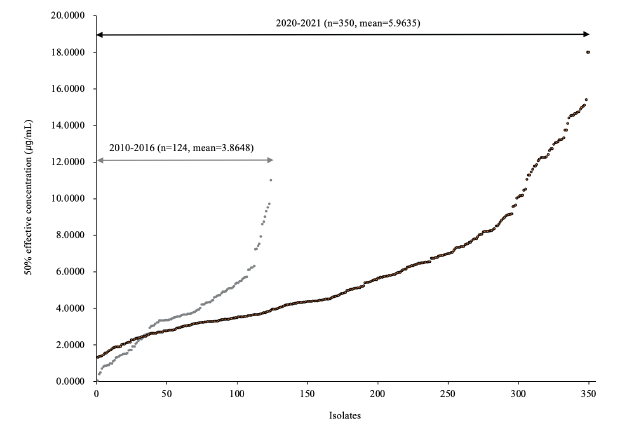Abstract
Fusarium head blight is an important disease of small grains. It is mainly caused by members of the
Figures & Tables

Fig. 1. Variation of 50% effective concentration (EC) values of species complex isolated from barley and wheat in 2010-2016 and 2020-2021.


